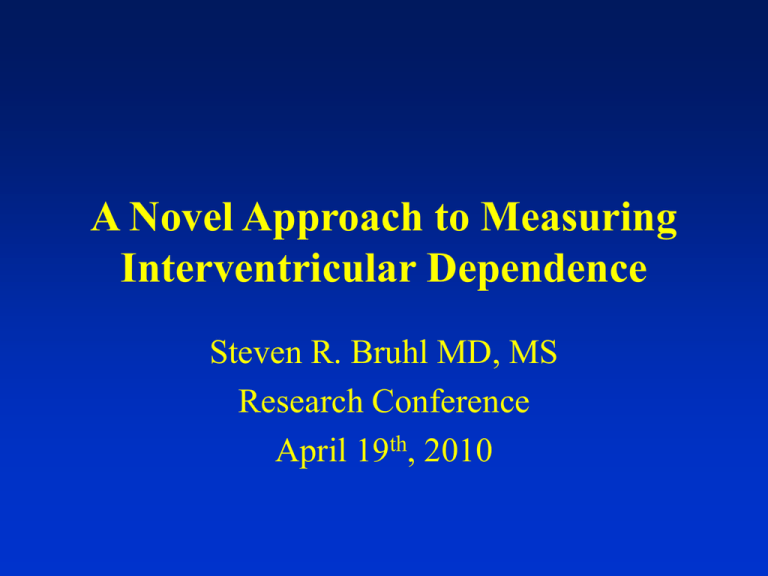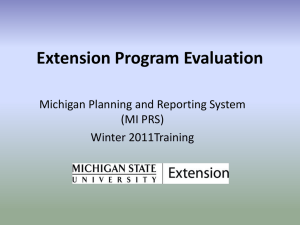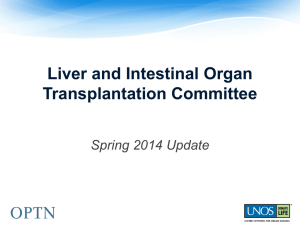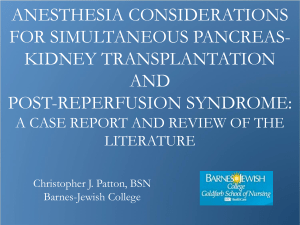
A Novel Approach to Measuring
Interventricular Dependence
Steven R. Bruhl MD, MS
Research Conference
April 19th, 2010
The Continuity Equation
• Flow in one area must equal
the flow in a second area
provided no shunts are
present.
• Most frequently used to
calculate aortic valve areas,
but also applies to blood flow
between the right and left
ventricles.
The Hypothesis
• In healthy subjects, blood flow between the RV and
the LV circuits should be nearly identical.
• However, blood flowing from the right ventricle (RV)
to the left ventricle (LV) and LV back to the RV is
dependent on right and left ventricular function
• Acute changes in RV or LV function might be
expected to abruptly alter this delicate interventricular
relation.
Study Rational:
If a method could be developed to accurately and
reproducibly assess this relationship:
– Knowing this interventricular relationship could add
diagnostic or prognostic information to chronic RV, LV, or
even pulmonary diseases. (PAH, Scleroderma, Restrictive
CM, ILD, COPD etc.)
– Acute changes in this interventricular relationship might
aid in the diagnostic, prognostic or treatment decisions of
acute RV or LV or pulmonary diseases. (LV or RV infarcts,
cardiac tamponade, PE)
Study Objective
• Develop a simple and reproducible method for
assessing this systolic interventricular relationship by:
– Selecting a relatively easy, validated and reproducible
measurement for assessing and directly comparing LV and
RV systolic function.
– Using this method, establish what is the “normal” systolic
interventricular relationship and compare this relationship
across age, by gender and BMI.
Difficulties of RV Functional
Assessment
(J Am Soc Echocardiogr 2009;22:776-792.)
Potential Options for Assessing RV
Function
•
•
•
•
•
Cardiac MRI: Gold Standard
RV RNA Blood Pool Scanning (MUGA)
Gated RV SPECT
3D Echocardiography
2D Echocardiography
–
–
–
–
Fractional area change
Tissue Doppler Techniques
Speckle Tracking Techniques
M-mode derived Tricuspid Annular Plane of Systolic
Excursion (TAPSE)
(J Am Soc Echocardiogr 2009;22:776-792.)
Cardiac MRI
Gated RV RNA Scan
Color Doppler Tissue Imaging
(J Am Soc Echocardiogr 2009;22:776-792.)
Pulsed Wave Tissue Doppler
TAPSE
Validation of TAPSE
• TAPSE is Feasible:
– TAPSE measured in all 900 pts in a mean time of 3 ± 1 min. Inter- and
intra-observer variabilities were very low for TAPSE (0.24±1.3 and
0.17±1.4 mm, respectively) (Int J Cardiol. 2007 Jan 31;115(1):86-9)
• TAPSE is Accurate:
– TAPSE Correlated significantly with RV EF when compared to cardiac
MRI (75 mixed pts) (r=0.62 p<0.01) (n=150) (Eur Radiol. 2008
Nov;18(11):2399-405)
• TAPSE is Superior:
– TAPSE by 2D echo is superior to 3D echo and preferable over gated
SPECT for the measurement of RV function when compared to MRI.
(34 mixed pts) (Eur J Echocardiogr. 2006 Dec;7(6):430-8)
TAPSE Declines in RV Disease
• Survival in pulmonary hypertension:
– 63 consecutive PH pts referred for RHC
• TAPSE>18mm: 1 yr (94%) and 2 yr (88%) survival
• TAPSE<18mm: 1 yr (60%) and 2 yr (50%) survival
(Am J Respir Crit Care Med 2006 Nov 1;174(9):1034-41)
• Detects early RV dysfunction in scleroderma
– 22 Scleroderma pts without PH vs 22 age matched controls
• TAPSE 23.2 +/- 4.1mm
• 26.5 +/- 2.9, P<0.006
(Cardiovasc Ultrasound. 2010 Jan 22;8:3)
• Pulmonary Embolism
– TAPSE has good correlation with surrogate markers for morbidity and
mortality in APE and seemed to perform as well as the standard echo
parameters used to assess RV function
(J Thromb Thrombolysis. 2009 Nov;28(4):506-12. Epub 2009 Mar 13.)
TAPSE Declines in LV Disease
• Predicts Death in STEMI with Shock
– 70 of 184 consecutive pts with STEMI and Shock:
– Cox-regression analysis revealed a hazard ratio of 2.1 (95% CI 1.3–3.4, P
= 0.002) for RV dysfunction when adjusted for age, glucose on admission,
and LVEF < 40%. In patients with and without RV dysfunction, the right
coronary artery was the infarct-related artery in 41 and 28% of patients,
respectively (P = 0.06). (Eur J Heart Fail (2010) 12 (3): 276-282)
• Predicts CRT Response:
– TAPSE (<14mm) prior to CRT predicts a decreased response to CRT
regardless of degree of inter or intra-ventricular dyssynchrony. (76% vs
14% P<0.001) (Pacing Clin Electrophysiol. 2009 Aug;32(8);1040-9)
• Predicts Death or Transplant in Systolic HF
– Among 140 consecutive pts with chronic CHF and EF<35%, NYHA Class
III or IV + TAPSE <14 combined were the best 2 predictors of death or
need for Tx. (Am J Cardiol. 2000 Apr 1;85(7):837-42)
Pulsed Wave Doppler Tissue
Imaging
• Peak systolic velocities of the tricuspid valve are affected
by pericardial pressure: RV TD S' velocities were reduced by
43% +/- 17% (P < .001) within 5 min of pericardial incision.
(Am Heart J. 2010 Feb;159(2):314-22.)
• RV infarcts reduce peak tricuspid velocities: 24 hours after
STEMI, tricuspid annular velocities were significantly reduced
in patients with ST elevation in V4R compared to those
without (11.1 vs. 13.7 cm/sec, P < 0.01). <13 cm/sec has a
sensitivity of 89% and specificity of 71% for identifying
patients with ST elevation in V4R. (Echocardiography. 2010
Feb;27(2):139-45. Epub 2009 Aug 31.)
Methods of LV functional
Assessment
•
•
•
•
•
•
•
•
Gated blood pool RNA Scanning
Cardiac MRI
Gated LV SPECT
3D Echo
Volumetric Approaches (Simpson’s Rule)
Mitral Annular Plane of Systolic Excursion (MAPSE)
Pulsed Wave Tissue Doppler
Visual Estimation
Measurements of LV Function
• MAPSE as a surrogate of LV Function: MAPSE
<12mm by MME has a 90% sensitivity, 88%
specificity and 89% accuracy for detection of
LVEF<50%
(Eur J Echocardiography (2006) 7, 187-198)
• MAPSE and TAPSE by MRI: In 116 pts, each
Correlated well with LVEF and RVEF respectively (r
= 0.64 and 0.52 resp. p < 0.001).
(Journal of Cardiovascular Magnetic Resonance 2008,
10(Suppl 1):A238)
Methods
• 51 “healthy” volunteers and patients were included in
the study population.
• All Participants had:
– Normal sinus rhythm without complete right or left bundle
branch blocks.
– No known history of pulmonary hypertension, atrial
fibrillation, pacemakers, defibrillators, a history of heart
failure, myocardial infarction, previous cardiac surgery.
– No more than mild valvular disease, normal LV and RV
size and function, a left atrial index <28cc/m².
Methods
• Baseline variables:
– Age, BSA, gender, left ventricular ejection fraction
(LVEF), left ventricular interventricular septal
thickness, left atrial volume index, and right
ventricular systolic pressure (RVSP).
• Divided by Age:<30, 30-50, and <50 years old.
• Divided by Gender:
Results
• Average peak values:
– TAPSE: 22.1 ± 2.9
– SPSE: 12.6 ± 2.2
– MAPSE: 14.3 ± 2.6
• MAPSE/TAPSE, SPSE/MAPSE, and
SPSE/TAPSE ratios were also calculated: all
measurements were further subdivided by age
and sex as seen in Table 2.
Figure 1. Linear regression analysis of MAPSE/TAPSE by age and BSA subdivided by
gender as well as LVs/RVs by age and BSA also subdivided by gender.
Pulsed Wave Tissue Doppler Results
• On average, RVs was 33.4% greater than LVs.
• The peak LVs/RVs ratio was 0.76 +0.14 and
remained relatively constant with little
variation across age (P=0.89), gender (P=0.80)
or BSA (P=0.46)
TAPSE and MAPSE Results
• On average, TAPSE was over 54.5% greater than MAPSE with a
MAPSE/TAPSE ratio of 0.66 ± 0.14.
• This relationship remained relatively consistent across the population and
did not vary significantly regardless of age (P=0.51), gender (P=0.19), or
BSA (P=0.78).
• Considering the cavity size of the RV is significantly less than that of the
LV, it stands to reason that the RV would need to decrease its end systolic
volume greater through increased tricuspid annular motion than that of the
larger LV in order to maintain an equal stroke volume.
• Since MAPSE is a surrogate of LV function just as TAPSE is a surrogate of
RV function; a MAPSE/TAPSE is a numerical representation of this
systolic interventricular relationship.
Putting it all Together
Normal LV/RV
Interventricular
Relationship
TAPSE/MAPSE=0.66 +0.14
Primary RV Disease
TAPSE ↓ while
MAPSE remains constant
(TAPSE/MAPSE ratio decreases)
Primary LV Disease
TAPSE ↓ and
MAPSE also ↓
(TAPSE/MAPSE ratio
remains constant)
Conclusion
• Unlike the diastolic interventricular
relationship, the relative consistency of the
MAPSE/TAPSE as well as the LVs/RVs ratio
across age, gender and BSA make these
measurements attractive for evaluation and
monitoring of patients with both acute or
chronic diseases that might interfere with this
interventricular relationship.
Conclusion
Examples of this might include:
• Acute Processes
– Pulmonary emboli
– Right ventricular infarction
– Tamponade
• Chronic Diseases
–
–
–
–
Various stages of PAH
COPD, ILD
Scleroderma
Heart failure and cor-pulmonale
Post-Reperfusion Syndrome
Steven R. Bruhl MD, MS
Introduction:
• Post-reperfusion syndrome (PRS) is a widely
reported complication that can occur after the
reperfusion of an ischemic tissue or organ.
• Originally Defined as:
– A decrease in mean arterial pressure, ≥ 30%
from baseline
– The hypotension must last for at least 1 minute
within 5 minutes of graft reperfusion.
– Mild PRS is defined as the above criteria with a
decrease in MAP that is less than 30%.
•Aggarwal S, Kang Y, Freeman JA, Fortunato FL, Pinsky MR. Postreperfusion syndrome: Cardiovascular
collapse following hepatic reperfusion during liver transplantation. Transplant Proc 1987; 119 Suppl 3: 54-5
History of PRS in Liver
Transplantation
• First described in association with liver
transplantation after the removal of the celiac
artery clamp.
• Incidence: estimated at 20% to 30%
• Is associated with significant intra-operative
and postoperative morbidity and mortality.
Introduction
• Also been reported to occur during:
– aneurysm repair
– release of high pressure in closed body
compartments
– cardiopulmonary bypass surgery
– release of limb tourniquets.
The True Etiology of PRS?
• Currently, the exact etiology of PRS remains
unknown.
• Theories:
– Washout of electrolytes and other metabolites,
especially hyperkalemia or hypercalcemia
– Sudden acidosis
– Sudden decrease in core temperature
– Sudden bradycardia caused by one of the above
What is the Actual Cause of Postreperfusion Syndrome?
In a prospective study by Aggarwal involving 69
consecutive patients undergoing liver transplantation,
the researchers examined the relationships between
the patient’s:
–
–
–
–
–
–
–
hemodynamic profiles
core temperatures
potassium levels
calcium levels
serum pH
SVR, CO, PCWP
Development of PRS
Aggarwal S, Kang Y, Freeman JA, et al: Postreperfusion syndrome: cardiovascular collapse following
hepatic reperfusion during liver transplantation. Transplant Proc 119(Suppl 3):54, 1987
Conclusion from Aggerwal
• PRS is caused by a combination of systemic
arterial dilation and myocardial depression
• “It appears that factors such as vasoactive
substances released from the grafted liver may
be involved.”
Aggarwal S, Kang Y, Freeman JA, et al: Postreperfusion syndrome: cardiovascular collapse following
hepatic reperfusion during liver transplantation. Transplant Proc 119(Suppl 3):54, 1987
Hypothesis Driving the Current
Retrospective Study
• Although the incidence of PRS is likely to be less
than during liver transplantation, we predicted that its
occurrence is significantly underreported.
• The use of AV nodal blocking agents and a PMHx of
HTN, DM or CAD may also be associated with an
increased incidence of PRS
• Increased morbidity and mortality associated with
PRS in liver transplant patients likely have similar,
but unrecognized, effects in renal transplant patients.
Findings
• Out of 150 sequential Renal transplants
between 6/06 and 3/08 at UTMC 6 had
hemodynamically significant hypotension
within 5 minutes of donor kidney reperfusion
• This is an overall incidence of 4%
Findings
• These findings confirm the existence of PRS
during renal transplantation.
• This retrospective study suggests that the
incidence of PRS is approximately 4%
• The majority of renal events are milder than
that typically seen during liver transplantation
Findings
• First study to suggest that advanced age, the
use of extended criteria donor kidneys and
diabetes mellitus might be risk factors for the
development of PRS.
•Perez-Pena J, Rincon D, Banares R, Olmedilla L, Garutti I, Arnal D, Calleja J, Clemente G. Autonomic
neuropathy is associated with hemodynamic instability during human liver transplantation. Transplant
Proc. 2003 Aug;35(5):1866-8.
Findings
• Although coronary artery disease showed only showed a
strong trend toward statistical significance, we believe that this
may have reached statistical significance in a larger patient
population.
• Aggarwal et al. showed that patients experiencing PRS had a
significantly lower cardiac output 30 seconds after reperfusion
despite concomitant decreases in SVR and mean arterial
pressure. Although the reason for this is unclear, a history of
CAD may be a marker of patients with decreased cardiac
reserve due to significant coronary artery stenosis.
Longterm Considerations
• Considering the relatively limited supply of
kidneys available for transplant, any
significant adverse outcome would likely
warrant further investigation to avoid these
complications.
Longterm Considerations
• Potential interventions might include:
– Retrograde reperfusion of the graft kidney by first
anastomosing the portal vein of the graft kidney to
the venous circulation and allowing deoxygenated
blood to fill the transplant kidney for 10 minutes
before unclamping the arterial circulation.
– Pre-flushing graft kidneys with transplant solutions
such as the Minnesota solution.
– Pre-treatment of patients with vasopressors prior to
unclamping







